Today’s Current Affairs: 11th February 2023 for UPSC IAS exams, State PSC exams, SSC CGL, State SSC, RRB, Railways, Banking Exam & IBPS, etc
Table of Contents
Lithium Reserves : Jammu And Kashmir
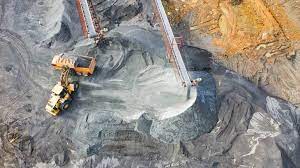
The Geological Survey of India has found lithium reserves in Jammu and Kashmir. They have been found in the Reasi district.
- India is importing Lithium from countries from Argentina and Australia. In 2021 alone, the price of lithium increased by 400% for several reasons.
- One of them was an increase in digital growth and electric batteries during COVID.
- Most of the lithium reserves are concentrated in South America; especially in countries such as Argentina, Chile and Bolivia.
- These 3 countries are called the Lithium Triangle.
- However, they are not the top producers of lithium in the world! China produces 75% of the world’s lithium.
- Rather than production, China is doing the refining business.
- Lithium is highly important to produce rechargeable batteries.
- The requirement of Lithium is essential in electric vehicles, smartphones, laptops, digital cameras and every other electronic component we use today. They are the major storage blocks of electricity.
Raja Ram Mohan Roy National Award : Journalist A.B.K. Prasad
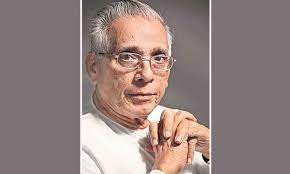
Raja Ram Mohan Roy lived in the 19th century.
- The reformer founded Brahmo Samaj in 1828 and played a major role in abolishing Sati.
- The Press Council of India presents awards in the name of the legend every year.
- In 2023, the Raja Ram Mohan Roy National Award is presented to Journalist A.B.K. Prasad for his contributions towards journalism.
- ABK Prasad has devoted his 75 years of life to journalism.
- He has worked as an editor in major journals in AP.
- He worked as the Chairman of the Official Language Commission between 2004 and 2009.
Guidelines On Climate Risk, Sustainable Finance : RBI
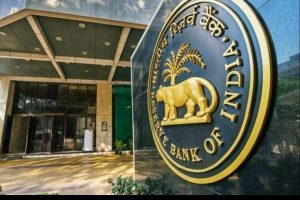
The Reserve Bank of India released a discussion paper called Climate Risk and Sustainable Finance.
- RBI says that climate change has the full potential to transform into climate-related financial risks. The guidelines are not yet released.
- RBI will release it in a phased manner.
- The guidelines will have all instructions related to climate risks.
- The discussion paper of RBI analyses an issue from different angles and provides solutions and guidelines to solve the problem.
- Based on the Climate Risk and Sustainable Finance discussion paper, the bank is to release guidelines on accepting green deposits; a framework to deal with climate-related financial risks.
- The RBI discussion paper defines the term as “Potential risk arising from climate change”.
- The climate-related financial risks occur in two main forms i.e physical risks and transition risks.
Asphyxiation : 7 Workers Died
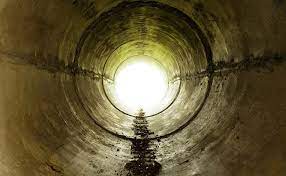
7 workers died due to asphyxiation during the removal of oil sludge in an edible oil tank in Andhra Pradesh.
- Initially, two workers who entered the tank to clean died. Five workers who attempted to rescue the duo also died.
- It is believed that the seven workers have reportedly died due to asphyxiation”.
- Only one worker survived.
- All the seven bodies have been retrieved from the tank.
- Asphyxiation is the failure or disturbance of the respiratory process brought about by the lack or insufficiency of oxygen in the brain.
- The unconsciousness that results sometimes leads to death.
- Besides lack of oxygen in the brain, Asphyxia can also be caused by injury to or obstruction of breathing passageways, as in strangulation or the aspiration of food (choking) or large quantities of fluid (near-drowning or drowning).
Status Of India’s Nuclear Energy:
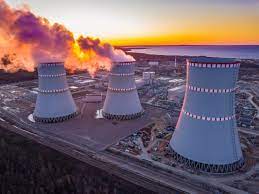
India’s nuclear power capacity experienced a significant increase. By 2021-22, it had risen to 47,112 Million Units.
- In 2017, the government gave simultaneous approval for 11 indigenous pressurised heavy water reactors with a total capacity of 7,000 MegaWatts.
- Nuclear energy is the fifth-largest source of electricity for India which contributes about 3% of the total electricity generation in the country.
- India has over 22 nuclear reactors in 7 power plants across the country which produces 6780 MW of nuclear power. In addition, one reactor, Kakrapar Atomic Power Project (KAPP-3) has also been connected to the grid in January- 2021.
- 18 reactors are Pressurised Heavy Water Reactors (PHWRs) and 4 are Light Water Reactors (LWRs).
- KAPP-3 is the India’s first 700 MWe unit, and the biggest indigenously developed variant of the PHWR.
- Government has also allowed Joint Ventures with PSUs to enhance India’s nuclear program.
- As a result, the Nuclear Power Corporation of India Limited (NPCIL) is now in two joint ventures with the National Thermal Power Corporation Limited (NTPC) and the Indian Oil Corporation Limited (IOCL).
- In the past, India’s nuclear installations were mostly located in South India or in Maharashtra and Gujarat in the west.
- However, the government is now promoting its expansion to other parts of the country. As an example, the upcoming nuclear power plant in Gorakhpur town of Haryana, which will become operational in the near future.
- The world’s first thorium-based nuclear plant, “Bhavni,” using Uranium-233, is being set up at Kalpakkam in Tamil Nadu.
- This plant will be entirely indigenous and will be the first of its kind. The experimental thorium plant “Kamini” already exists in Kalpakkam.
Bru Tribe : Registered To Vote In Tripura
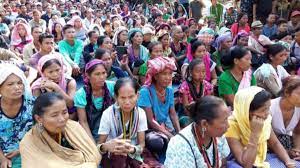
Over 14,000 Brus displaced from Mizoram have been registered to vote in Tripura since their rehabilitation process began in April 2021.
- Bru or Reang is a community indigenous to the Northeast, living mostly in Tripura, Mizoram, and Assam.
- In Tripura, they are recognised as a Particularly Vulnerable Tribal Group.
- They belong to Indo-Mongoloid racial stock. Their languages have an affinity with Austro-Asiatic groups under the Tibeto-Burman family.
- Ethnically they are divided into 2 major clans namely Meska and Molsoi.
- Their language is known as “Kaubru” which has a tonal effect on the Kuki language though broadly it is the Kok-Borok dialect.
- They are still a nomadic tribe and a large number among them maintain their livelihood involving Hilltop Jhum Cultivation and other food gathering activities.
- They believe in spirits and the existence of a soul.
- By religion they are Hindus and most of their deities are akin to gods and goddesses of the Hindu faith. Among Reangs followers of Vaishnavism are found in good numbers.
- This tribal community traditionally are endogamous and does not marry outside their community.
- The village council chief known as “RAI” permits Divorce and Widow marriage.
Free Float In Stocks:
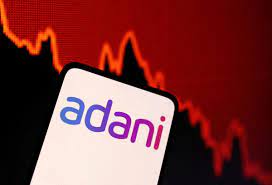
Index provider MSCI said it has cut the free-float designations of four securities of India’s Adani group.
- The free float is also known as Public float which refers to the shares of a company that can be publicly traded and are not restricted.
- It generally excludes promoters’ holding, government / strategic holding and other locked-in shares, which will not come to the market for trading in the normal course.
- Free Float=(Outstanding shares-Restricted Shares-Closely held shares)
- Outstanding shares refer to the number of shares held by all of the company’s shareholders
- Restricted shares refer to shares that are not transferable until certain conditions are met. Restricted shares are generally held by corporate management, such as executives and directors.
- Closely-held shares refer to shares that are typically held onto for a very long-term basis. Examples include major long-term shareholders and insiders.
- Free Float Methodology is used to provide a more accurate reflection of market movements and stocks actively available for trading in the market.
- The free-float methodology has been adopted by many of the world’s major indexes.
- MSCI calculates free float-adjusted market capitalization for each security to calculate the weights of the securities in the MSCI indexes.
Global Quality Infrastructure Index (GQII):
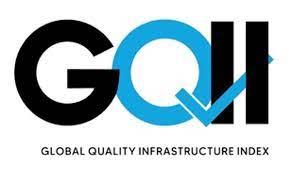
India’s national accreditation system under the Quality Council of India (QCI) has been ranked 5th in the world in the recent Global Quality Infrastructure Index (GQII) 2021.
- The GQII ranks the 184 economies in the world based on quality infrastructure (QI).
- India’s overall QI system ranking continues to be in the Top 10 at the 10th position, with the standardization system (under BIS) at 9th and the metrology system (under NPL-CSIR) at the 21st position in the world.
- The GQII is an initiative of the independent consulting firms Mesopartner and Analyticar to research and disseminate data on Quality Infrastructure.
- It measures the relative development of countries’ quality infrastructure.
- A formula calculates a score for each country based on its position in the sub-rankings for metrology, standards and accreditation.
Quality Council of India:
- It was established in 1997 jointly by the Department for Promotion of Industry & Internal Trade (DPIIT), the Ministry of Commerce & Industry, and the Indian industry.
- It is registered as a non-profit organizationunder the Societies Registration Act XXI of 1860.
- It is operated through the constituent Boards of QCI, primarily the National Accreditation Board for Certification Bodies (NABCB), and the National Accreditation Board for Testing & Calibration Laboratories (NABL),
- It is governed by a Council of 38 members with equal representations of government, industry and consumers.
- The Chairman of QCI is appointed by the Prime Minister on the recommendation of the industry to the government.
Second Edition Of The Small Satellite Launch Vehicle (SSLV-D2) : ISRO

The Indian Space Research Organisation (ISRO) successfully launched the second edition of the Small Satellite Launch Vehicle (SSLV-D2) from the first launch pad of Satish Dhawan space centre at Sriharikota, Andhra Pradesh.
Small Satellite Launch Vehicle:
- The new vehicle was developed to capture the emerging small and microsatellite commercial market.
- The SSLV caters to the launch of up to 500 kg satellites to low earth orbits on a ‘launch-on-demand’ basis.
- The launch vehicle uses three solid stages followed by a liquid-fuel-based Velocity Trimming Module (VTM) to place satellites in orbit
- The rocket provides low-cost access to space, offers low turn-around time and flexibility in accommodating multiple satellites, and demands minimal launch infrastructure.
- It placed the Indian Space Research Organisation (ISRO) earth observation satellite EOS-07 and two co-passenger satellites — Janus-1 and AzaadiSat2
- Janus-1 is a technology demonstrator satellite built by United States-based Antaris and its Indian partners XDLinks and Ananth Technologies.
- AzaadiSat2 payloads have been built by 750 girl students from across India.




